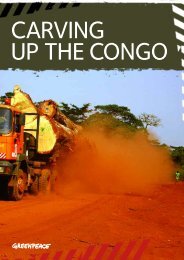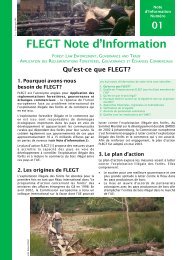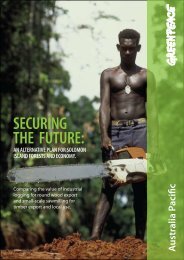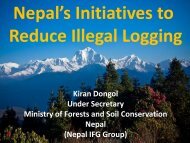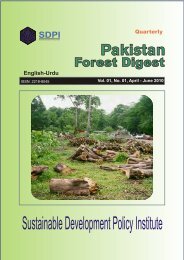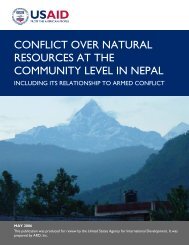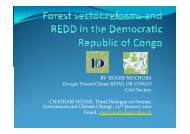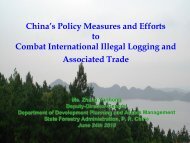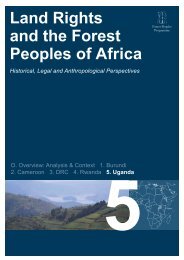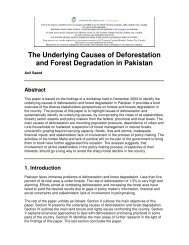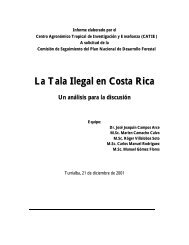CHAINSAW MILLING IN GHANA: CONTExT, DRIVERS ... - Fornis.net
CHAINSAW MILLING IN GHANA: CONTExT, DRIVERS ... - Fornis.net
CHAINSAW MILLING IN GHANA: CONTExT, DRIVERS ... - Fornis.net
- No tags were found...
Create successful ePaper yourself
Turn your PDF publications into a flip-book with our unique Google optimized e-Paper software.
Chainsaw milling in Ghana: context, drivers and impacts1.3 Public debate on chainsaw millingNot surprisingly, there has been increased public debate about how to deal withchainsaw milling in policy and practice. In 2004, for example, Tropenbos InternationalGhana organised a national expert consultation workshop solely to discuss chainsawmilling. The FAO commissioned a study in 2005 to assess CSM in Ghana. Theseinitiatives resulted in reports (TBI 2004; Odoom 2005) that revealed the complexitiesof CSM; it was confirmed that CSM was thriving and that enforcement of theban had largely failed. It was recognised that there was a lack of information on thedrivers and structure of CSM and on its social, economic and environmental impacts.Little information was available on the perceptions of CSM stakeholders on how todeal with the issue.In 2005, the UK Department for International Development (DFID) funded a studyon chainsaw milling and lumber trade in West Africa. This study, which includedGhana, resulted in three main reports (Adam et al. 2007a, b and c), focusing on socioeconomicimpacts, corruption in CSM and trade and the development of a decisionsupport system for CSM in Ghana. During 2008–09, based on an information gapanalysis, the Forestry Research Institute of Ghana (FORIG) undertook a study of CSMto provide the additional information needed to inform a policy dialogue process forfinding alternatives to illegal chainsaw milling in Ghana. The study report was sharedat a two-day regional workshop on chainsaw milling in May 2009 in Accra, Ghana.This document collates and synthesises all the information available on CSM with aview to informing the multi-stakeholder dialogue process to develop policy options.It provides a summary of the most up-to-date information on chainsaw operationsin Ghana, drawing on the information contained in previous studies. In particular itbuilds on the work of Tropenbos International (2004), Adam et al. (2007a and b),Marfo, Adam and Obiri (2009) and subsequent discussions on chainsaw millingunder the EU-TBI chainsaw milling project (Table 2).1.4 Main approaches followed in previous studiesThe national focus-group discussion workshop in 2004 was attended by more than100 people from all major stakeholder groups; ten invited papers were presentedand group discussions were held, and the proceedings were published (TBI 2004).The DFID-funded study on chainsaw milling and lumber trade in West Africa wascarried out by FORIG in collaboration with Aberdeen University over two years with aresearch team of eight core members.The TIDD/FORIG market survey, commissioned under the Natural Resources andEnvironment Governance program, was carried out within a period of about twomonths with four technical teams.The Ghana case study from the EU-TBI chainsaw milling project was carried out byan 11-member research team, mainly from FORIG. The details of the studies aresummarised in Table 2.4




